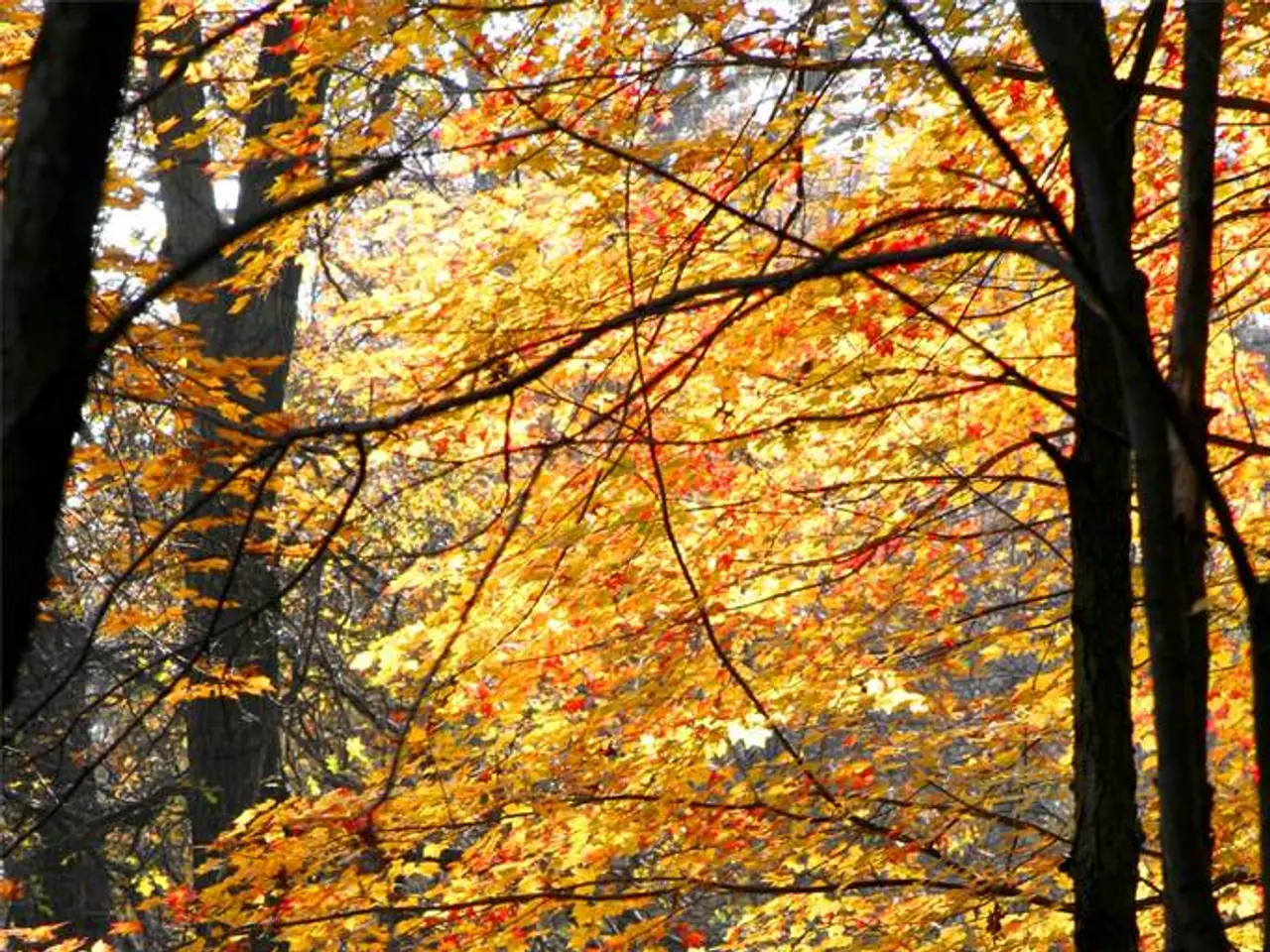Tight on space but craving greenery? Uncover the optimal tree choices for compact gardens
Transforming Small Spaces with Trees: Enhancing Garden Design and Ecology
Trees play a significant role in small garden design, offering multiple benefits that extend beyond mere aesthetics. They bring structure, seasonal interest, and a strong sense of presence that grounds the garden space. Even a single tree can enhance the garden's visual appeal and ecological contribution.
For instance, in a temporary, manufactured setting like a show garden, trees give a sense of permanence. In a well-considered position, planting mature trees can provide an instant effect, often mixed with smaller specimens that will establish quickly. The cost of planting a mature tree is a worthwhile investment compared to the price of a bespoke oak pergola or a retaining brick wall.
Creating a Delicate Canopy or Providing Dense Shade
When it comes to creating a delicate canopy or providing dense shade, certain tree varieties excel. For a delicate canopy with ornamental value, the Japanese Maple (Acer palmatum) is ideal. This small ornamental tree is good for partial shade and small gardens, valued for its varied seasonal leaf colors and elegant form. It prefers morning sun and dappled light and does well in moist, well-drained soil.
For a denser, small to medium-sized tree with multi-season interest, the Palibin lilac tree (Syringa meyeri 'Palibin') is a densely branched choice that fills small spaces nicely with fragrant blooms and attractive fall color. It adds character and dimension without overwhelming the garden.
Evergreens like the white spruce (Picea glauca) offer year-round foliage and compact widths suitable for small spaces, providing a dense shade and structure that works well as a statement piece or grouped planting in limited areas.
Fruit-Bearing Trees for Small Gardens
Fruit trees are another excellent choice for small gardens. Fig trees, such as 'Brown Turkey' or 'Brunswick', are well-suited for hot courtyard spaces and can grow in containers due to their preference for root restriction. They bear delicious fruits and are self-fertile, requiring only one tree for pollination.
Mulberries, like Morus alba or Morus nigra, can make an architectural feature in a small garden and can be grown as a standard or half standard tree. They provide shade and produce fruits that are enjoyed by both humans and wildlife.
Crab apples are another great all-rounder tree for a small garden, offering stunning blossom in spring and colorful fruits in autumn. Amelanchier trees offer blossom in spring, berries in summer, and colorful autumn foliage.
The New Perennial Movement and Trees
In recent years, the New Perennial Movement in planting design has tended to push trees into the background. However, trees are far more than a frame for exuberant planting and deserve to take centre stage. In a real garden, trees are a magnetic presence that honor the seasons. They are a vital part of the ecosystem, providing habitat for wildlife and contributing to biodiversity.
One woodland management policy that highlights this is 'halo felling', which allows a single tree to thrive by clearing shrubs and trees around it, creating a halo of light. This practice not only benefits the tree but also encourages growth and diversity in the surrounding area.
In conclusion, selecting trees such as Japanese Maple for delicate canopies and Palibin lilac or white spruce for denser shade works well for small garden designs. These trees maximize space while enhancing the garden’s structure and seasonal beauty. Mulberries, crab apples, and Amelanchier trees offer fruit and colour, while fig trees provide shade and a tropical feel. By incorporating trees into small garden design, we can create spaces that are not only beautiful but also ecologically valuable.
[1] RHS (2021) Choosing the right tree for your garden. Available at: https://www.rhs.org.uk/advice/profile?PID=536 [2] The Conscious Gardener (2021) Small Garden Trees: Choosing the Right Trees for Your Small Space. Available at: https://www.theconsciousgardener.co.uk/small-garden-trees/ [4] The Spruce (2021) Japanese Maple (Acer palmatum): Care and Growing Guide. Available at: https://www.thespruce.com/japanese-maple-acer-palmatum-growing-guide-1410032
- Embrace the beauty of a delicate canopy or provide dense shade by incorporating trees like the Japanese Maple, Palibin lilac tree, or white spruce into garden design for small spaces.
- Fruit trees such as fig, mulberry, crab apple, or Amelanchier are excellent choices for small gardens, offering an array of benefits like shade, delicious fruits, and vibrant colors.
- Trees play a crucial role in enhancing small garden design, extending beyond aesthetics, as they provide habitat for wildlife, contribute to biodiversity, and serve as a magnetic presence that honors the seasons.




